Roni
Member
Hi,
The previous trip report part:
India 2012 - 10: Udaipur - A Morning in the Life of ... (50 p.)
http://railroadforums.com/forum/showthread.php?t=39872
The accompanying video:
http://www.youtube.com/watch?v=Ln9ntoVBVts&hd=1
February 11 2012
We find ourselves at Kuvanthal station, just as the metre gauge line Mavli Jn. - Marwar Jn. built in the 1930s. Somehow the architecture was conveying Wild West flair.

Once more a well next to the station.

The landscape showed no less Wild West atmosphere.

YDM-4 6565 approached again pulling 52076 MVJ - MJ passenger.

Only a provisional platform edge remained, probably more tracks had been laid here in earlier times. The old goods shed also originated from the founding period.

Quite a few locals approached the stopped train, even chatting with the loco crew.

An elderly gentleman with cane had left the train.


The engine had experienced a tough life.

Indian Railways window views.
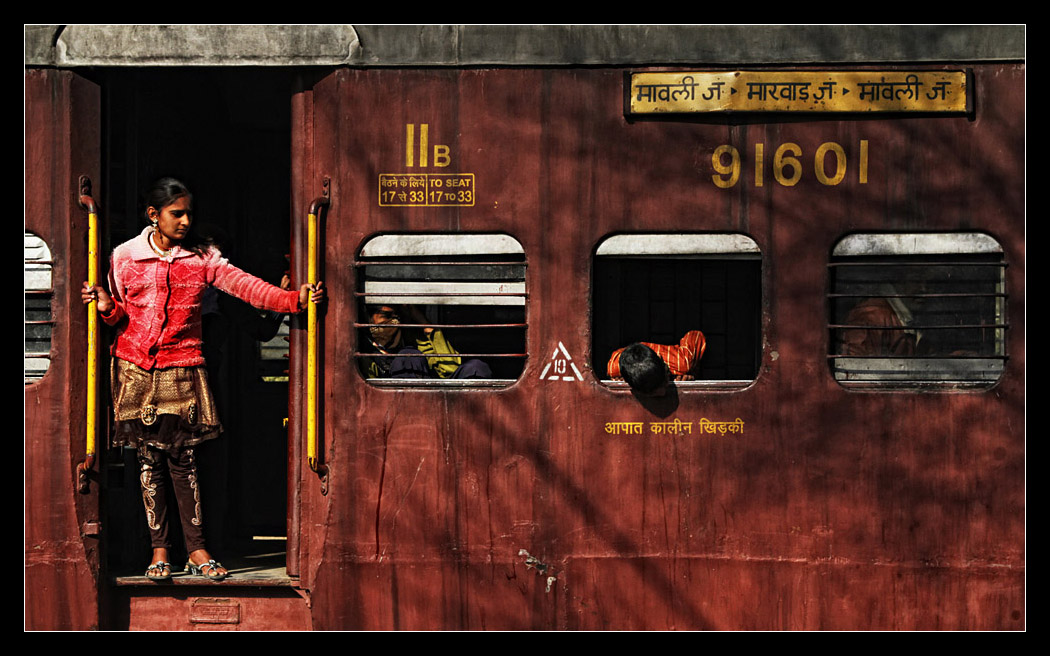



Back on the road we overtook some Jain nuns and pilgrims dressed white, then we reached Khambli Ghat, start of the mountain section across the Aravalli Range. The home signal had already been set to clear but we did not want to risk missing the train in the mountains and quickly continued. First we bought enough water for the mountain excursion at the village roadside market stalls.

Hand shadow.

Multilayered streetmarket.

At the small village of Kachhbli we had to turn onto an inconspicuous very stony dirt road leading into the dry moonscape towards Ghoram Ghat, the intermediate station of the ghat section between Khambli Ghat and Phulad. Even here, in solitude, we had to overtake goat herds.

We passed a few dried out basins with dams used to store water during monsoon season. The landscape became more and more arid, still we met people.

The driver drove the jeep as far uphill as never before with my companions, but at some point we had to get out and walk. The Aravalli Range is the eroded stub of ancient mountains formed during the precambrian era. We had to follow a footpath down into a gorge and geologically very interesting surroundings. Everywhere you could see pieces of rock lying around with clearly visible layers, sometimes deformed. Again we came across a few people cutting wood. The gorge suddenly turned green as a brook emerged from the rocks forming a waterfall during the wet season. Out of this reason a place of pilgrimage had been erected here, Jog Mandi Shiva temple.

Right next to it spanning the gorge one of the bridges was located, named Jog Mand after the temple. The railway was circling around a valley towards Ghoram Ghat station on the other side.

We traversed two bridges, the second, Ghora Ghati, I wanted to take pictures of and climbed up steep terrain towards the ridge.

The train came soon at 11:30 a.m., you could follow it all the way around the valley rolling downhill.

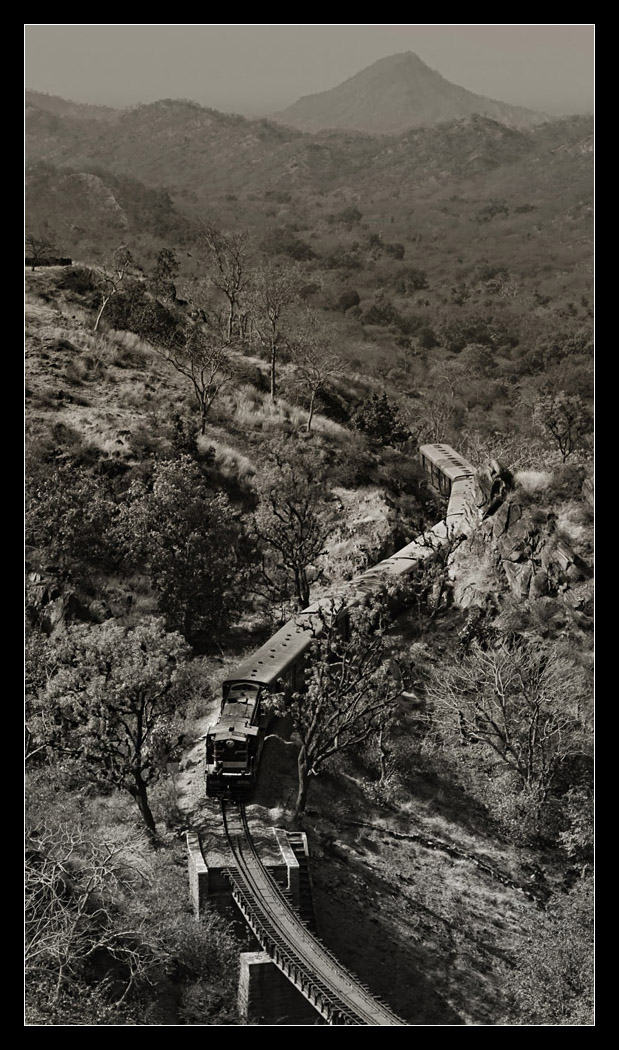
In the background to the right you can spot the train again on the viaduct next to the station.

From my viewpoint you could also manage to shoot the largest bridge, Kachbali Nala, traversing the valley.


The panorama, on the tallest mountaintop another temple could be found.

At the station home signal the train had to stop and sound the horn. A catch siding, a point with tracks leading steeply up the hill to catch runaway trains, could be found here before which a brake test had to be performed. Only after a successful test the switch was allowed to be set to continue. The same procedure could be witnessed on mainline mountain routes with heavy traffic, too. After a short time the train started rolling again, stopped at the station and continued soon afterwards across the next viaduct.


The same view including Jog Mandi temple.

Again the dominant layers, many rocks around the temple had been painted.

The distant panorama already with view at the northern plains of Marwar, to the right of Ghoram Ghat station one is able to notice the catch siding. The ghat section featured several of those, trains had to stop everywhere.

Bridge information plates, this was already bridge number 106 of the line.

Now we took another lovely tasting homemade lunch brought by Harish with Alu and Chapati, this time adding the sweet Besan (flour made from yellow lentils) Chakki, a cake-like nutty pastry, lighter than European cakes, already crumbling in the mouth.
The time until the train was supposed to return at 15:30 from Marwar Jn. was used by writing the diary and exploring the line further up to the valley crossing.
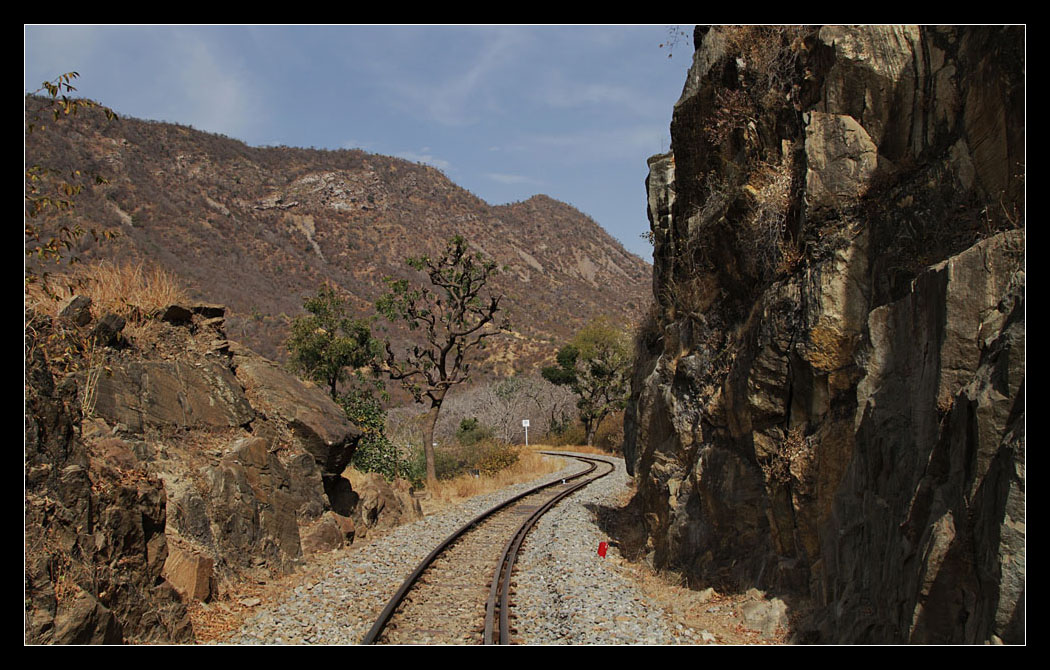
Along the slopes I discovered a monkey family, Ghoram Ghat station was well known for its sizeable intrusive monkey population, however, these were shy.

At the valley crossing.

On the way back I thought we finally had left civilization behind us when I encountered a large goat herd tended by female villagers and their children. The tracks obviously were used to access remote mountain regions.

The time for the uphill train finally approached, it turned out to be 20 minutes delayed. I decided to wait at the temple bridge, still I could follow the train photo- and videographically around the whole valley.
The station bridge already against the light.
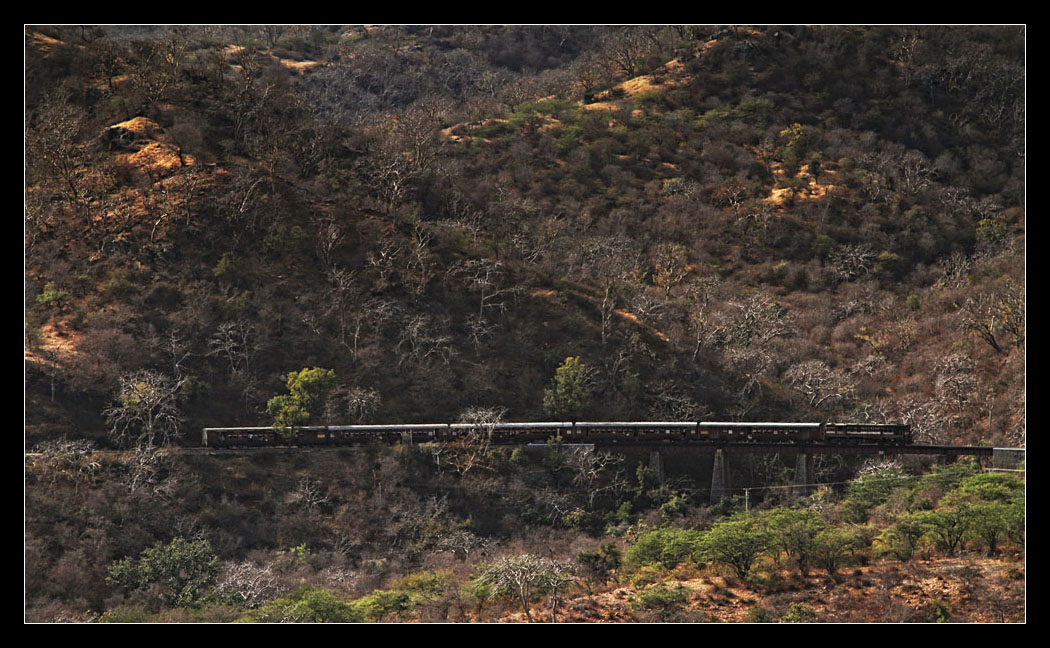
Upon exit the train passed the catch siding, you can clearly discern where a little moisture was left in the landscape according to vegetation.

Goat view.

Next to the temple, at the time no priests were present.

Through Jog Mand bridge.
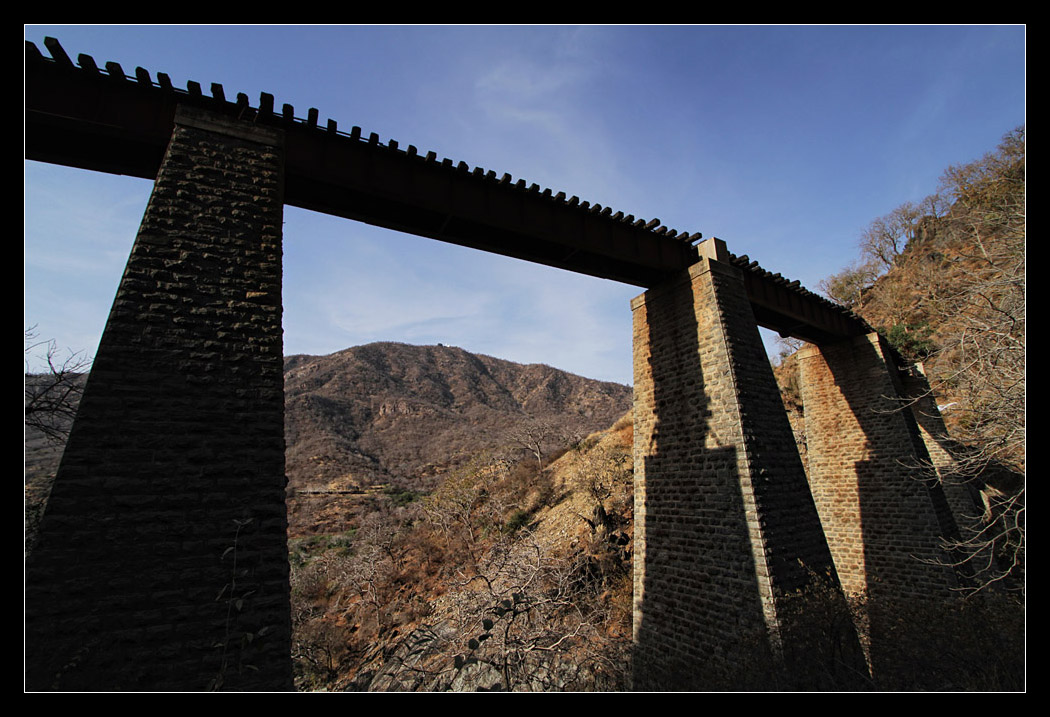
The train crossing the valley.
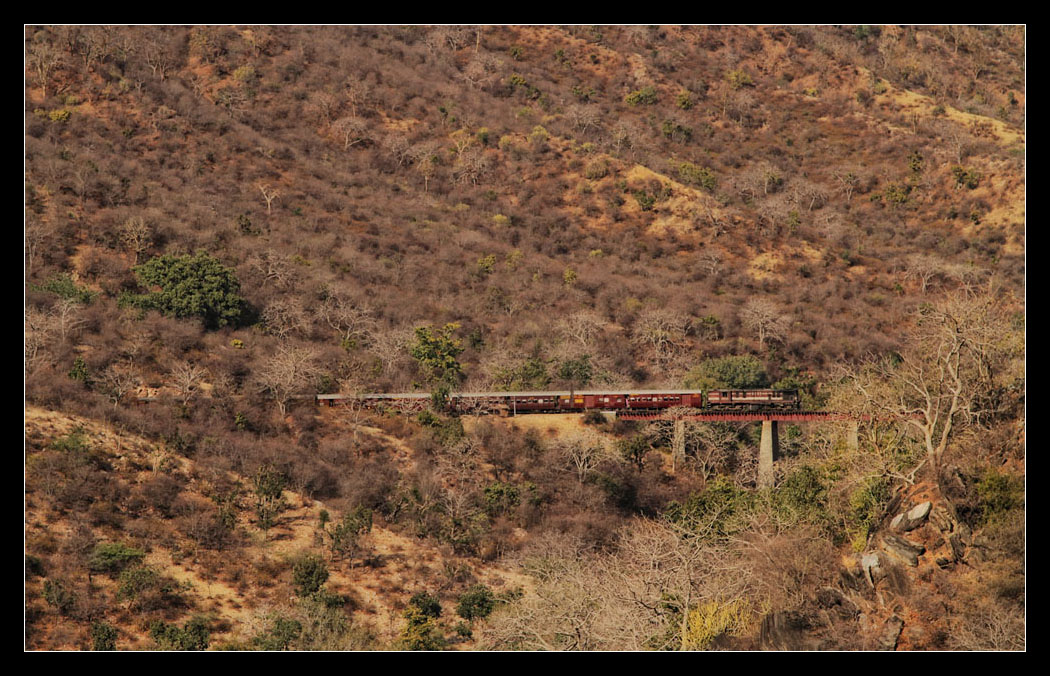

Below Jog Mand bridge.

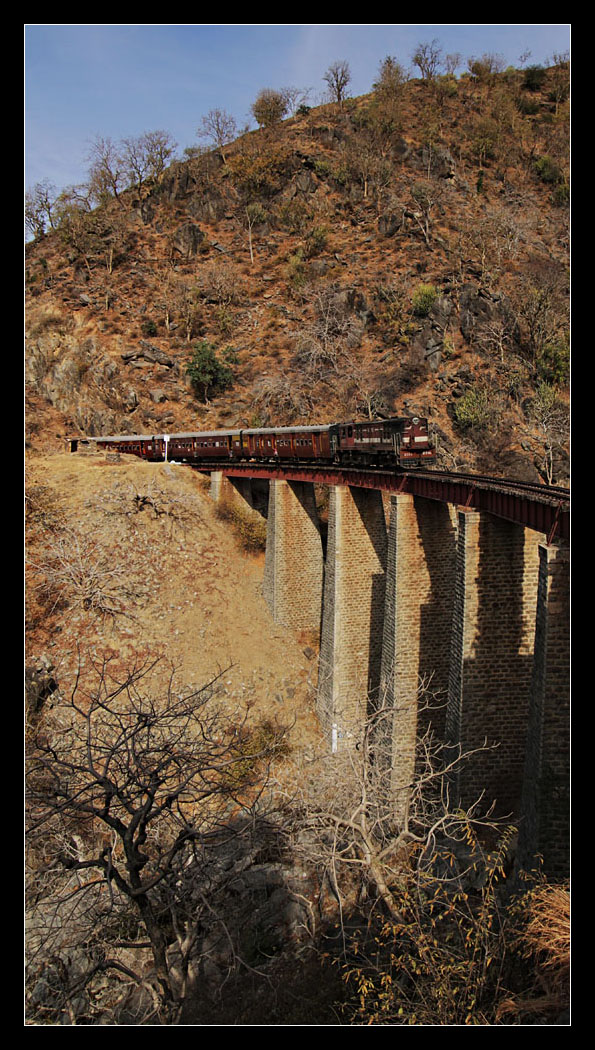

Harish told me that this spot sometimes served as request stop for pilgrims but it only worked on downhill trains, uphill the grade would be to steep to get going again. Returning pilgrims would have to walk over to the station to board the train.
I greeted the loco driver who was too busy taking pictures with his mobile phone, also some other passengers as well as a filming European tourist at the door.

I had to wait for the others returning from different spots, then we climbed taking more impressions along the beautiful path to the car where the driver had taken a prolonged nap.

Back at Khambli Ghat we quickly bought chai and snacks then followed the well constructed National Highway 8 for 128 kms back to Udaipur where I had to reach my train to Ratlam in the evening.
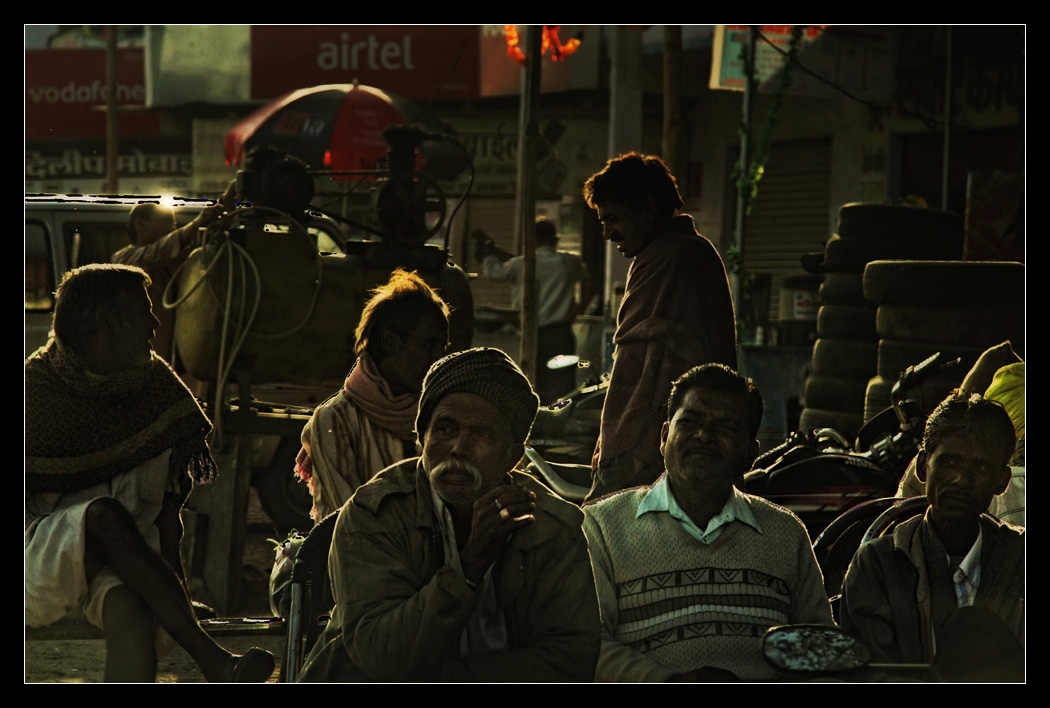
In the beginning we were relatively alone on the road, this abruptly changed once we reached the massive white marble mining area north of Udaipur. About 50 kms were lined by one marble company after another, house-sized chunks were transported on flatbed trucks and a variety of other vehicles. Tractors had been equipped with additional pieces of marble in front acting as counterweights to prevent them from tipping backwards when pulling loaded trailers. Everything was shrouded in white dust, huge portions of surrounding mountains were already missing. All this in a chaos with a name: Indian country road. Although, you cannot say it was chaos without system, albeit a suicidal system. The main problem were enormously different speeds between traffic participants, up to Udaipur we had definitely overtaken hundreds of vehicles. You drove up to the driver in front, already practically on the right side, sounded your horn or flashed the distant light, and off you went. At spots without visual confirmation like mountain serpentines you just flashed your distant lights, if no one coming into the opposite diection answered you brutally changed into the right lane. All this in a bulk of trucks, busses, tractors, cars and motorcycles, the latter rode on the left anyway practically forming a second lane into your direction. After having to close my eyes a lot Udaipur station eventually was reached, I heartily said goodbye to Harish and Heinrich before boarding 19658 Udaipur City - Indore Express. This time in 2AC I had the lower berth along the side, not a bad choice for a single traveller as you had complete privacy with your own curtain - if it was not pulled away unintentionally by people passing the corridors. Additionally I had two windows to my own for orientation. I laid down immediately at 8 o' clock as I had to get out at Ratlam very early next morning for the next metre gauge line.
The previous trip report part:
India 2012 - 10: Udaipur - A Morning in the Life of ... (50 p.)
http://railroadforums.com/forum/showthread.php?t=39872
The accompanying video:
http://www.youtube.com/watch?v=Ln9ntoVBVts&hd=1
February 11 2012
We find ourselves at Kuvanthal station, just as the metre gauge line Mavli Jn. - Marwar Jn. built in the 1930s. Somehow the architecture was conveying Wild West flair.

Once more a well next to the station.

The landscape showed no less Wild West atmosphere.

YDM-4 6565 approached again pulling 52076 MVJ - MJ passenger.

Only a provisional platform edge remained, probably more tracks had been laid here in earlier times. The old goods shed also originated from the founding period.

Quite a few locals approached the stopped train, even chatting with the loco crew.

An elderly gentleman with cane had left the train.


The engine had experienced a tough life.

Indian Railways window views.




Back on the road we overtook some Jain nuns and pilgrims dressed white, then we reached Khambli Ghat, start of the mountain section across the Aravalli Range. The home signal had already been set to clear but we did not want to risk missing the train in the mountains and quickly continued. First we bought enough water for the mountain excursion at the village roadside market stalls.

Hand shadow.

Multilayered streetmarket.

At the small village of Kachhbli we had to turn onto an inconspicuous very stony dirt road leading into the dry moonscape towards Ghoram Ghat, the intermediate station of the ghat section between Khambli Ghat and Phulad. Even here, in solitude, we had to overtake goat herds.

We passed a few dried out basins with dams used to store water during monsoon season. The landscape became more and more arid, still we met people.

The driver drove the jeep as far uphill as never before with my companions, but at some point we had to get out and walk. The Aravalli Range is the eroded stub of ancient mountains formed during the precambrian era. We had to follow a footpath down into a gorge and geologically very interesting surroundings. Everywhere you could see pieces of rock lying around with clearly visible layers, sometimes deformed. Again we came across a few people cutting wood. The gorge suddenly turned green as a brook emerged from the rocks forming a waterfall during the wet season. Out of this reason a place of pilgrimage had been erected here, Jog Mandi Shiva temple.

Right next to it spanning the gorge one of the bridges was located, named Jog Mand after the temple. The railway was circling around a valley towards Ghoram Ghat station on the other side.

We traversed two bridges, the second, Ghora Ghati, I wanted to take pictures of and climbed up steep terrain towards the ridge.

The train came soon at 11:30 a.m., you could follow it all the way around the valley rolling downhill.


In the background to the right you can spot the train again on the viaduct next to the station.

From my viewpoint you could also manage to shoot the largest bridge, Kachbali Nala, traversing the valley.


The panorama, on the tallest mountaintop another temple could be found.

At the station home signal the train had to stop and sound the horn. A catch siding, a point with tracks leading steeply up the hill to catch runaway trains, could be found here before which a brake test had to be performed. Only after a successful test the switch was allowed to be set to continue. The same procedure could be witnessed on mainline mountain routes with heavy traffic, too. After a short time the train started rolling again, stopped at the station and continued soon afterwards across the next viaduct.


The same view including Jog Mandi temple.

Again the dominant layers, many rocks around the temple had been painted.

The distant panorama already with view at the northern plains of Marwar, to the right of Ghoram Ghat station one is able to notice the catch siding. The ghat section featured several of those, trains had to stop everywhere.

Bridge information plates, this was already bridge number 106 of the line.

Now we took another lovely tasting homemade lunch brought by Harish with Alu and Chapati, this time adding the sweet Besan (flour made from yellow lentils) Chakki, a cake-like nutty pastry, lighter than European cakes, already crumbling in the mouth.
The time until the train was supposed to return at 15:30 from Marwar Jn. was used by writing the diary and exploring the line further up to the valley crossing.

Along the slopes I discovered a monkey family, Ghoram Ghat station was well known for its sizeable intrusive monkey population, however, these were shy.

At the valley crossing.

On the way back I thought we finally had left civilization behind us when I encountered a large goat herd tended by female villagers and their children. The tracks obviously were used to access remote mountain regions.

The time for the uphill train finally approached, it turned out to be 20 minutes delayed. I decided to wait at the temple bridge, still I could follow the train photo- and videographically around the whole valley.
The station bridge already against the light.

Upon exit the train passed the catch siding, you can clearly discern where a little moisture was left in the landscape according to vegetation.

Goat view.

Next to the temple, at the time no priests were present.

Through Jog Mand bridge.

The train crossing the valley.


Below Jog Mand bridge.



Harish told me that this spot sometimes served as request stop for pilgrims but it only worked on downhill trains, uphill the grade would be to steep to get going again. Returning pilgrims would have to walk over to the station to board the train.
I greeted the loco driver who was too busy taking pictures with his mobile phone, also some other passengers as well as a filming European tourist at the door.

I had to wait for the others returning from different spots, then we climbed taking more impressions along the beautiful path to the car where the driver had taken a prolonged nap.

Back at Khambli Ghat we quickly bought chai and snacks then followed the well constructed National Highway 8 for 128 kms back to Udaipur where I had to reach my train to Ratlam in the evening.

In the beginning we were relatively alone on the road, this abruptly changed once we reached the massive white marble mining area north of Udaipur. About 50 kms were lined by one marble company after another, house-sized chunks were transported on flatbed trucks and a variety of other vehicles. Tractors had been equipped with additional pieces of marble in front acting as counterweights to prevent them from tipping backwards when pulling loaded trailers. Everything was shrouded in white dust, huge portions of surrounding mountains were already missing. All this in a chaos with a name: Indian country road. Although, you cannot say it was chaos without system, albeit a suicidal system. The main problem were enormously different speeds between traffic participants, up to Udaipur we had definitely overtaken hundreds of vehicles. You drove up to the driver in front, already practically on the right side, sounded your horn or flashed the distant light, and off you went. At spots without visual confirmation like mountain serpentines you just flashed your distant lights, if no one coming into the opposite diection answered you brutally changed into the right lane. All this in a bulk of trucks, busses, tractors, cars and motorcycles, the latter rode on the left anyway practically forming a second lane into your direction. After having to close my eyes a lot Udaipur station eventually was reached, I heartily said goodbye to Harish and Heinrich before boarding 19658 Udaipur City - Indore Express. This time in 2AC I had the lower berth along the side, not a bad choice for a single traveller as you had complete privacy with your own curtain - if it was not pulled away unintentionally by people passing the corridors. Additionally I had two windows to my own for orientation. I laid down immediately at 8 o' clock as I had to get out at Ratlam very early next morning for the next metre gauge line.
